Fundamentals of Nursing (71)
Principles
-

Fundamentals - Principles, part 14: Sharps Injuries, Body Mechanics, and Brachytherapy
Meris Shuwarger BSN, RN, CEN, TCRNInpatient safety regarding sharps injuries, proper body mechanics, and the care of patients receiving internal radiation (brachytherapy).
Fundamentals - Principles, part 14: Sharps Injuries, Body Mechanics, and Brachytherapy
Meris Shuwarger BSN, RN, CEN, TCRNInpatient safety regarding sharps injuries, proper body mechanics, and the care of patients receiving internal radiation (brachytherapy).
-

Fundamentals - Principles, part 13: Disaster Response - Fires, Equipment Malfunctions, Chemical Exposure, Tornadoes, and Bomb Threats
Meris Shuwarger BSN, RN, CEN, TCRNInpatient safety, including fire safety, equipment malfunction, chemical exposure, tornado safety, and bomb threats.
Fundamentals - Principles, part 13: Disaster Response - Fires, Equipment Malfunctions, Chemical Exposure, Tornadoes, and Bomb Threats
Meris Shuwarger BSN, RN, CEN, TCRNInpatient safety, including fire safety, equipment malfunction, chemical exposure, tornado safety, and bomb threats.
-
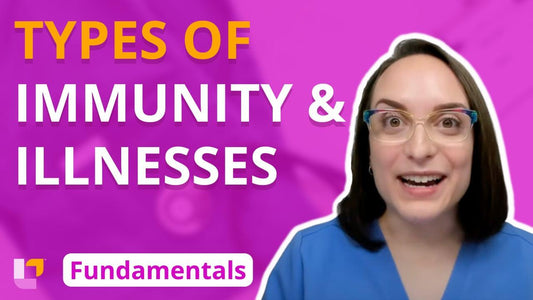
Fundamentals - Principles, part 12: Types of Immunity and Illnesses
Meris Shuwarger BSN, RN, CEN, TCRNTypes of immunity (active natural, active artificial, passive natural, and passive artificial), types of illnesses (acute and chronic) along with types of risk factors (modifiable and non-modifiable).
2 commentsFundamentals - Principles, part 12: Types of Immunity and Illnesses
Meris Shuwarger BSN, RN, CEN, TCRNTypes of immunity (active natural, active artificial, passive natural, and passive artificial), types of illnesses (acute and chronic) along with types of risk factors (modifiable and non-modifiable).
2 comments -

Fundamentals - Principles, part 11: The Chain and Stages of Infection
Meris Shuwarger BSN, RN, CEN, TCRNThe chain of infection (infectious agent, reservoir, portal of exit, mode of transmission, portal of entry, and susceptible host) and the stages of infection (incubation, prodromal, illness, and convalescence).
Fundamentals - Principles, part 11: The Chain and Stages of Infection
Meris Shuwarger BSN, RN, CEN, TCRNThe chain of infection (infectious agent, reservoir, portal of exit, mode of transmission, portal of entry, and susceptible host) and the stages of infection (incubation, prodromal, illness, and convalescence).
Practice & Skills
-

Fundamentals - Practice & Skills, part 29: Perioperative Nursing Care
Meris Shuwarger BSN, RN, CEN, TCRNThe essential points of perioperative (preoperative, intraoperative, and postoperative) nursing care.
4 commentsFundamentals - Practice & Skills, part 29: Perioperative Nursing Care
Meris Shuwarger BSN, RN, CEN, TCRNThe essential points of perioperative (preoperative, intraoperative, and postoperative) nursing care.
4 comments -
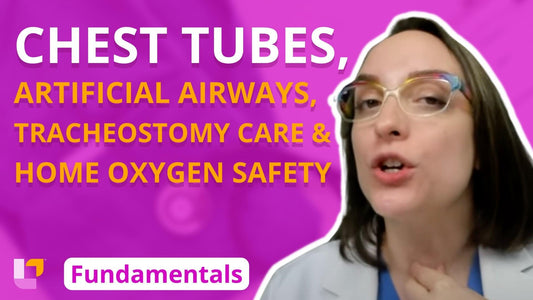
Fundamentals - Practice & Skills, part 28: Chest Tubes, Artificial Airways, Tracheostomy Care, Home Oxygen Safety
Meris Shuwarger BSN, RN, CEN, TCRNThe basics of chest tubes, artificial airways, tracheostomy care, and home oxygen safety.
1 commentFundamentals - Practice & Skills, part 28: Chest Tubes, Artificial Airways, Tracheostomy Care, Home Oxygen Safety
Meris Shuwarger BSN, RN, CEN, TCRNThe basics of chest tubes, artificial airways, tracheostomy care, and home oxygen safety.
1 comment -

Fundamentals - Practice & Skills, part 27: Oxygen Delivery Devices, Oxygenation Interventions, and Suctioning
Meris Shuwarger BSN, RN, CEN, TCRNOxygen delivery devices (nasal cannula, non-rebreather, venturi device), therapeutic oxygenation interventions (chest physiotherapy and positive airway pressure), and suctioning.
1 commentFundamentals - Practice & Skills, part 27: Oxygen Delivery Devices, Oxygenation Interventions, and Suctioning
Meris Shuwarger BSN, RN, CEN, TCRNOxygen delivery devices (nasal cannula, non-rebreather, venturi device), therapeutic oxygenation interventions (chest physiotherapy and positive airway pressure), and suctioning.
1 comment -
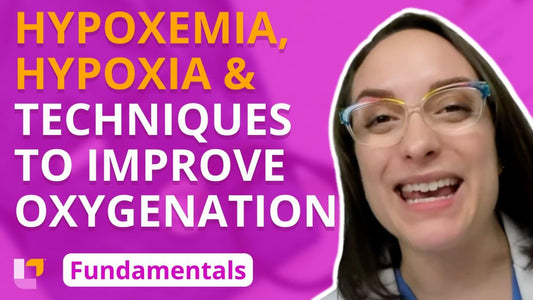
Fundamentals - Practice & Skills, part 26: Hypoxemia, Hypoxia, Techniques to Improve Oxygenation
Meris Shuwarger BSN, RN, CEN, TCRNVentilation, diffusion, and perfusion, along with hypoxemia, hypoxia, and techniques to improve oxygenation.
Fundamentals - Practice & Skills, part 26: Hypoxemia, Hypoxia, Techniques to Improve Oxygenation
Meris Shuwarger BSN, RN, CEN, TCRNVentilation, diffusion, and perfusion, along with hypoxemia, hypoxia, and techniques to improve oxygenation.
Leadership
-
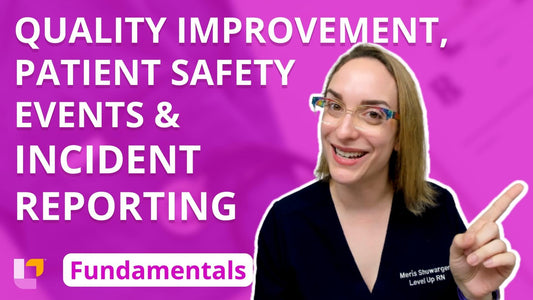
Fundamentals - Leadership, part 7: Quality Improvement, Patient Safety Events, Incident Reporting
Meris Shuwarger BSN, RN, CEN, TCRNThe quality improvement (QI) process and best practices along with different types of patient safety events (e.g., near miss, adverse event, sentinel event).
Fundamentals - Leadership, part 7: Quality Improvement, Patient Safety Events, Incident Reporting
Meris Shuwarger BSN, RN, CEN, TCRNThe quality improvement (QI) process and best practices along with different types of patient safety events (e.g., near miss, adverse event, sentinel event).
-

Fundamentals - Leadership, part 6: Employee Performance Appraisal, Disciplinary Action
Meris Shuwarger BSN, RN, CEN, TCRNBest practices for employee performance appraisal and disciplinary action (e.g., for the chemically-impaired employee and the progressive approach to discipline).
Fundamentals - Leadership, part 6: Employee Performance Appraisal, Disciplinary Action
Meris Shuwarger BSN, RN, CEN, TCRNBest practices for employee performance appraisal and disciplinary action (e.g., for the chemically-impaired employee and the progressive approach to discipline).
-

Fundamentals - Leadership, part 5: Conflict Management
Meris Shuwarger BSN, RN, CEN, TCRNThe types and stages of conflict, and conflict management strategies (e.g., avoiding, smoothing, competing, accommodating, compromising, collaborating).
Fundamentals - Leadership, part 5: Conflict Management
Meris Shuwarger BSN, RN, CEN, TCRNThe types and stages of conflict, and conflict management strategies (e.g., avoiding, smoothing, competing, accommodating, compromising, collaborating).
-

Fundamentals - Leadership, part 4: Efficient Nursing Practice, Critical Paths
Meris Shuwarger BSN, RN, CEN, TCRNBest practices for efficiency in nursing practice and critical pathways.
Fundamentals - Leadership, part 4: Efficient Nursing Practice, Critical Paths
Meris Shuwarger BSN, RN, CEN, TCRNBest practices for efficiency in nursing practice and critical pathways.
Gerontology
-
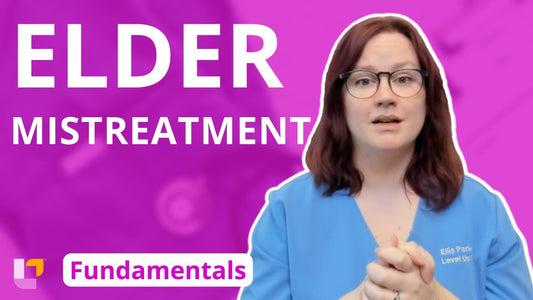
Fundamentals - Gerontology, part 12: Elder Mistreatment
Ellis Parker EdD, RN, CNE, CHSEElder mistreatment, including risk factors, types of abuse, signs/symptoms, and nursing care.
Fundamentals - Gerontology, part 12: Elder Mistreatment
Ellis Parker EdD, RN, CNE, CHSEElder mistreatment, including risk factors, types of abuse, signs/symptoms, and nursing care.
-

Fundamentals - Gerontology, part 11: Polypharmacy and Beer's List
Ellis Parker EdD, RN, CNE, CHSEPolypharmacy, including risk factors, prevention, patient teaching, and a selection of medication categories and classes that are included on the Beer's List.
Fundamentals - Gerontology, part 11: Polypharmacy and Beer's List
Ellis Parker EdD, RN, CNE, CHSEPolypharmacy, including risk factors, prevention, patient teaching, and a selection of medication categories and classes that are included on the Beer's List.
-
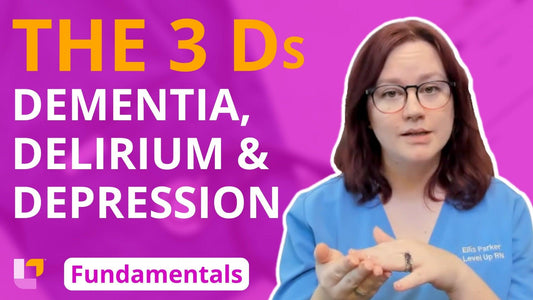
Fundamentals - Gerontology, part 10: The 3 Ds
Ellis Parker EdD, RN, CNE, CHSEDementia, delirium, and depression, including the differences in onset, reversibility, causes, changes to the level of consciousness, and behavior-related changes.
Fundamentals - Gerontology, part 10: The 3 Ds
Ellis Parker EdD, RN, CNE, CHSEDementia, delirium, and depression, including the differences in onset, reversibility, causes, changes to the level of consciousness, and behavior-related changes.
-
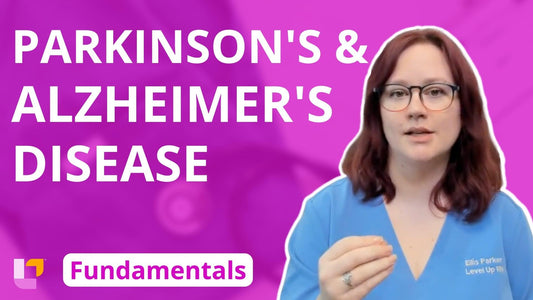
Fundamentals - Gerontology, part 9: Alzheimer's / Parkinson's Disease
Ellis Parker EdD, RN, CNE, CHSEAlzheimer's disease, including the signs/symptoms, diagnosis, and nursing care.
Fundamentals - Gerontology, part 9: Alzheimer's / Parkinson's Disease
Ellis Parker EdD, RN, CNE, CHSEAlzheimer's disease, including the signs/symptoms, diagnosis, and nursing care.
Community Health
-
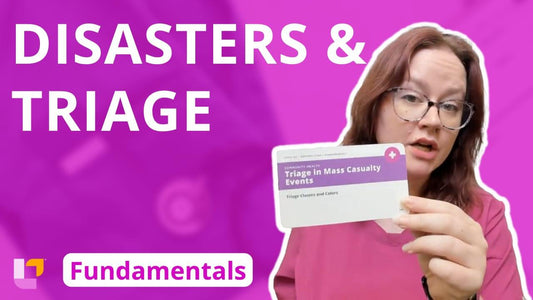
Fundamentals - Community Health, part 9: Disasters and Triage
Ellis Parker EdD, RN, CNE, CHSEDifferent actions that should occur before, during, and after disasters. These include mitigation, preparedness, response, and recovery. the classification system used to triage during mass casualty events.
Fundamentals - Community Health, part 9: Disasters and Triage
Ellis Parker EdD, RN, CNE, CHSEDifferent actions that should occur before, during, and after disasters. These include mitigation, preparedness, response, and recovery. the classification system used to triage during mass casualty events.
-
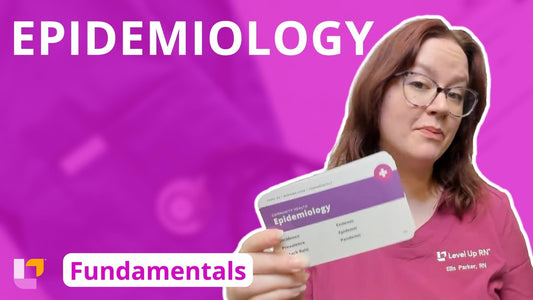
Fundamentals - Community Health, part 8: Epidemiology
Ellis Parker EdD, RN, CNE, CHSEEpidemiology including the epidemiologic triangle. This triangle consists of the agent, host, and environment. Ellis then discusses other important terms in epidemiology like incidence, prevalence, attack rate, endemic, epidemic, and...
2 commentsFundamentals - Community Health, part 8: Epidemiology
Ellis Parker EdD, RN, CNE, CHSEEpidemiology including the epidemiologic triangle. This triangle consists of the agent, host, and environment. Ellis then discusses other important terms in epidemiology like incidence, prevalence, attack rate, endemic, epidemic, and...
2 comments -
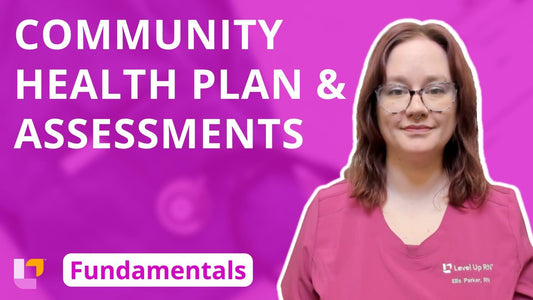
Fundamentals - Community Health, part 7: Community Health Plan and Assessments
Ellis Parker EdD, RN, CNE, CHSEThe nursing process steps as they relate to developing a community health plan, including specific data collection methods used in the assessment of a community like informal interviews, direct observation,...
Fundamentals - Community Health, part 7: Community Health Plan and Assessments
Ellis Parker EdD, RN, CNE, CHSEThe nursing process steps as they relate to developing a community health plan, including specific data collection methods used in the assessment of a community like informal interviews, direct observation,...
-
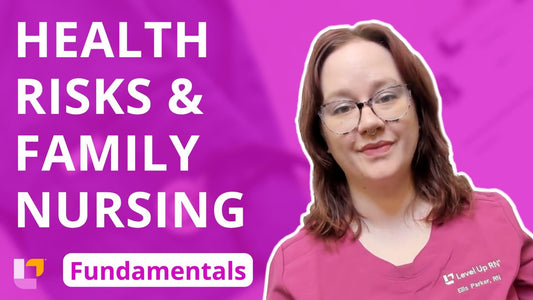
Fundamentals - Community Health, part 6: Health Risks and Family Nursing
Ellis Parker EdD, RN, CNE, CHSEHealth risks across the lifespan by discussing health risks specific to infants, children, adolescents, and adults, including any related family or patient teaching. Family nursing is also discussed by reviewing...
Fundamentals - Community Health, part 6: Health Risks and Family Nursing
Ellis Parker EdD, RN, CNE, CHSEHealth risks across the lifespan by discussing health risks specific to infants, children, adolescents, and adults, including any related family or patient teaching. Family nursing is also discussed by reviewing...




















